Teams or SharePoint? This question concerns many organisations when choosing a platform for collaboration and document management. After all, both Teams and SharePoint are developed by Microsoft. So the legitimate question arises: what exactly is the difference, and which application should you rely on?
To make the decision easier, this article explores the similarities and differences between the two tools in terms of document management, highlights their weaknesses, and shows how these can be overcome.
How Microsoft Teams and SharePoint came to be
Microsoft SharePoint is not a “new” application. The first version appeared back in 2001. However, Microsoft’s breakthrough came when it introduced SharePoint Server in 2007. At that time, Microsoft attempted to position SharePoint as the main platform for different disciplines, such as business intelligence, intranet, or document management.
This approach worked well in some disciplines but struggled in others. For example, Microsoft quickly removed the BI tool it had integrated into SharePoint. Today, the company provides BI functions as independent tools under the name Power BI. Other SharePoint features, such as document management and intranet capabilities, delivered exactly what users needed, performed better, and remain widely used today.
In 2020, SharePoint is an integral part of Microsoft 365. Every customer who now wants to license products like Outlook, Word, etc. most likely acquired them through the Microsoft 365 product suite. That means companies that acquire Outlook licenses also have SharePoint and Microsoft Teams. That is one more reason to take a closer look at the existing document management options offered by SharePoint and Teams.
Document management options in SharePoint
In many cases, users open their browser in the morning and “unwittingly” wind up on the intranet, which is based on SharePoint and could look like this:

By using hyperlinks (for example, via the main navigation in the upper area of the page), intranet users reach the website of the specialised departments concerned.
The web-based lists and libraries that are typical for SharePoint can be found in the left navigation area of the specialised departments:
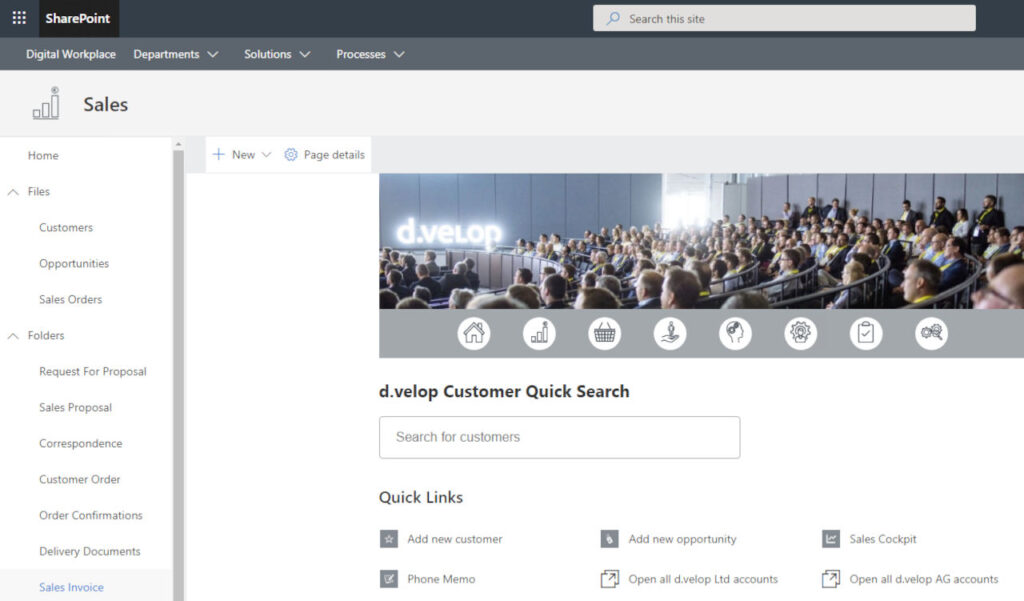
Users can utilise these lists and libraries to create, store, and manage documents. Important and essential document management functions, such as collaborative document processing, document history, and document versioning, are already available here.
Integrated Content Services for Microsoft 365 & SharePoint
Join the webinar to find out how d.velop for Microsoft 365 helps to overcome the hurdles organisations face when trying to drive digital transformation with SharePoint.
Document versioning with SharePoint
An example of document versioning is illustrated below:
The following graphic clearly indicates that the document EN_Cover_Letter-Sales_Quotation_20200811-V1:
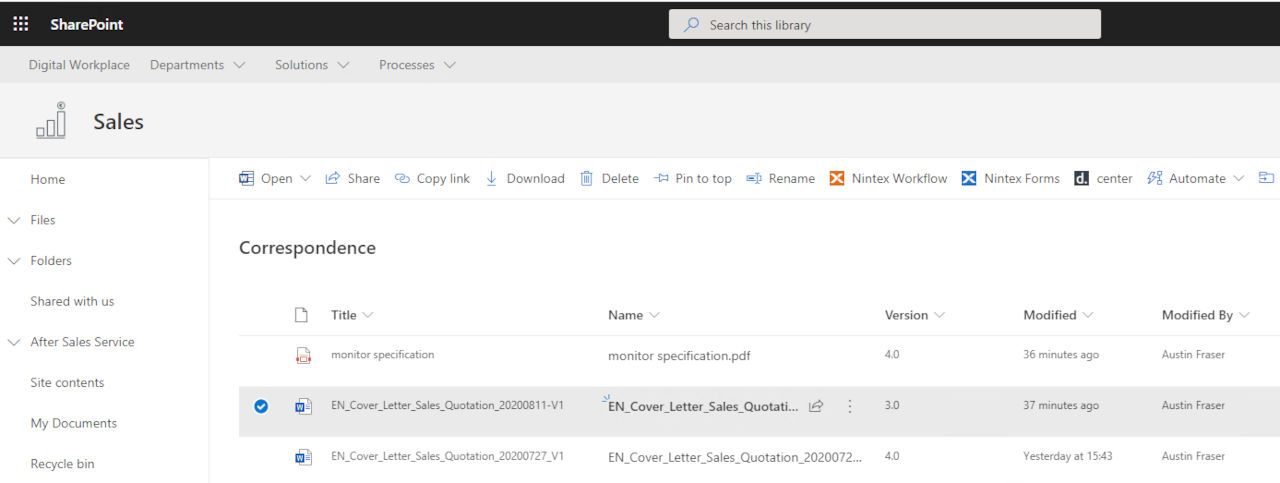
The version history can also be called up using the context menu:

It is also possible to restore old versions, if necessary.
In addition, users can open different versions of a document stored in SharePoint in Word and easily compare their contents:
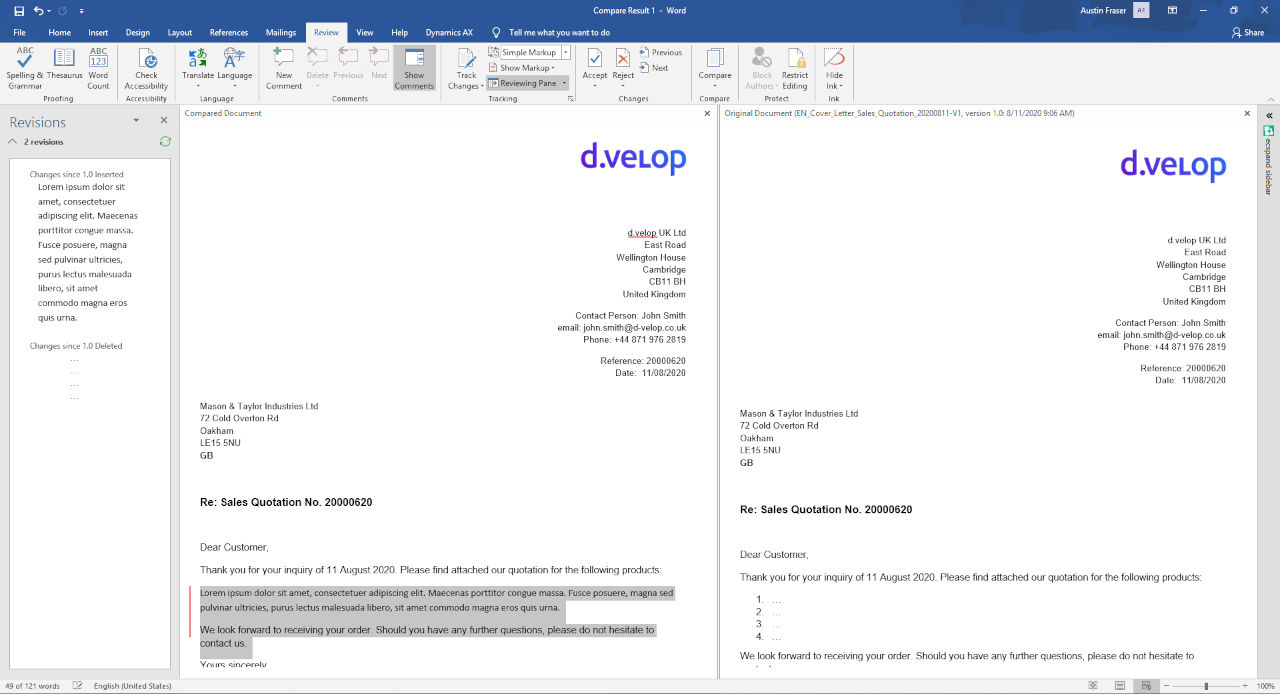
In practice, there are often two approaches to using document libraries:
- Approach 1) SharePoint is primarily used to store documents that are to be made available to a larger group in SharePoint via the department website.
- Approach 2) Documents have a longer creation cycle and lifecycle (e.g., an Excel list), and employees use SharePoint as a storage location so they can continue working on these documents together.
Experience has shown that, in practice, SharePoint is not used as often for ad hoc document creation and sharing. However, exceptions confirm this rule as well, of course.
Document management options in Microsoft Teams
Microsoft Teams is now better known as the “Swiss army knife” for brief collaborations and (video) calls. Microsoft Teams has emerged from what used to be Skype for Business. Why did that happen? One disadvantage of organizing Skype meetings was that relevant documents could not be easily shared and processed cooperatively during online meetings. By introducing MS Teams, however, Microsoft changed this situation drastically. Not only can teams work on documents together, they can also process tasks or web-based lists. Therefore, one of the great advantages offered by Teams is that teams can quickly and easily work on documents online.
What many people do not know is that document management in Microsoft Teams is, technically speaking, nothing more than a SharePoint document library that has been integrated into Teams. Both the versioning described in the area above and all other functions mentioned are therefore used 1:1 in MS Teams.
To illustrate this visually as well, the following text indicates how SharePoint versioning can be configured in Microsoft Teams. Based on the Microsoft Teams standard view for documents, the user needs to click the button “Open in SharePoint” in the upper right area:
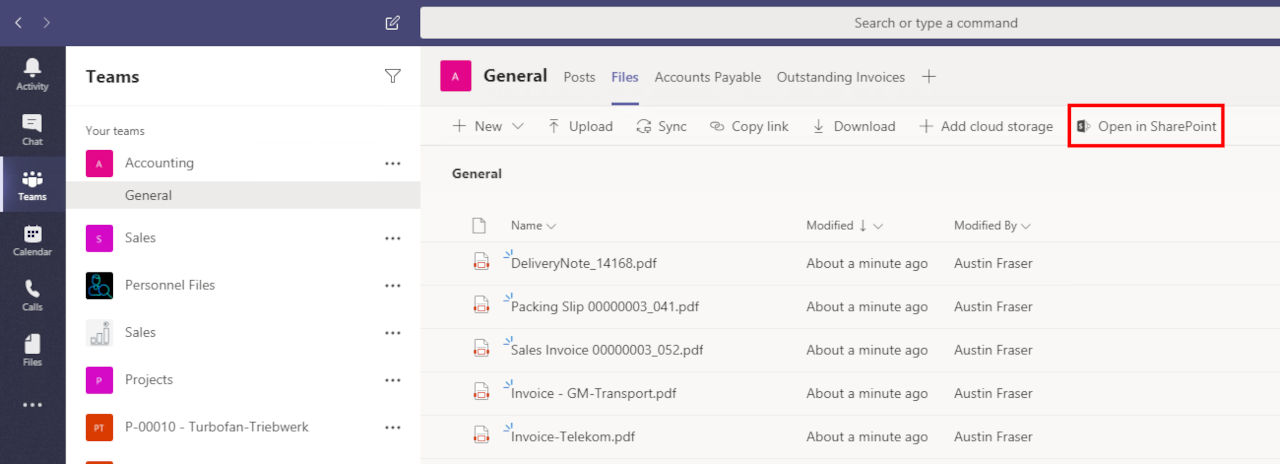
We can see that this redirects us straight to SharePoint. And this also is where all of the stored documents (thus far via Teams) are located:
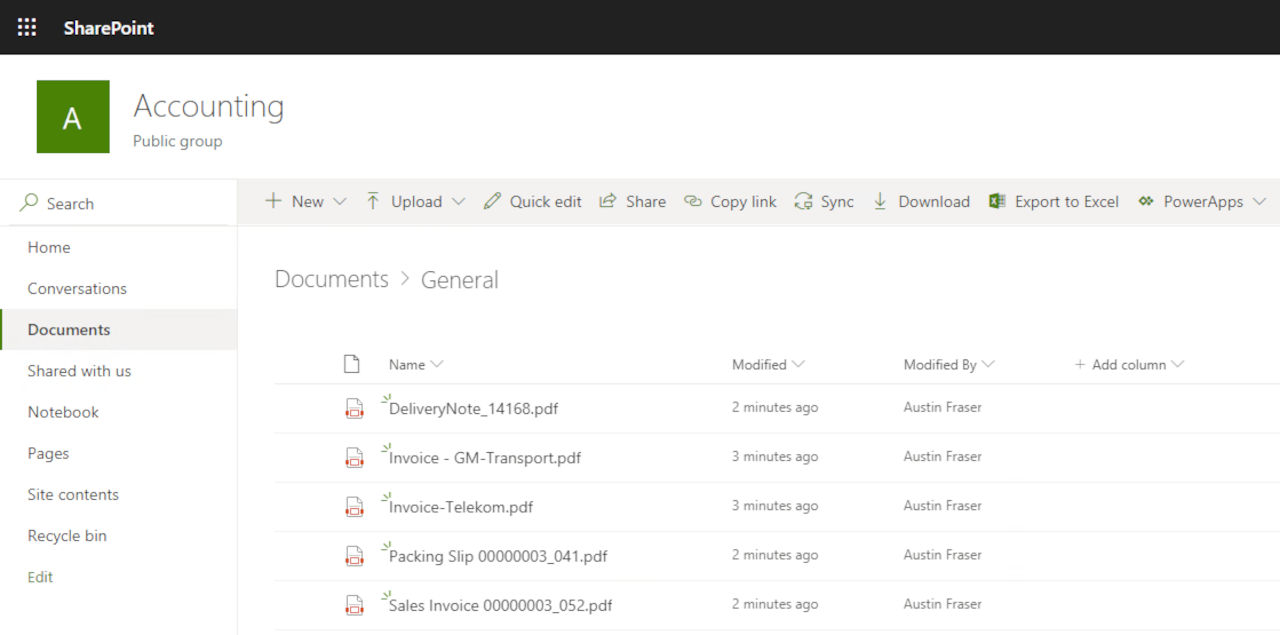
We can configure the relevant settings by using the gearwheel ⚙ Library Settings in the upper area of the website or by using the “+“ character located between the columns.
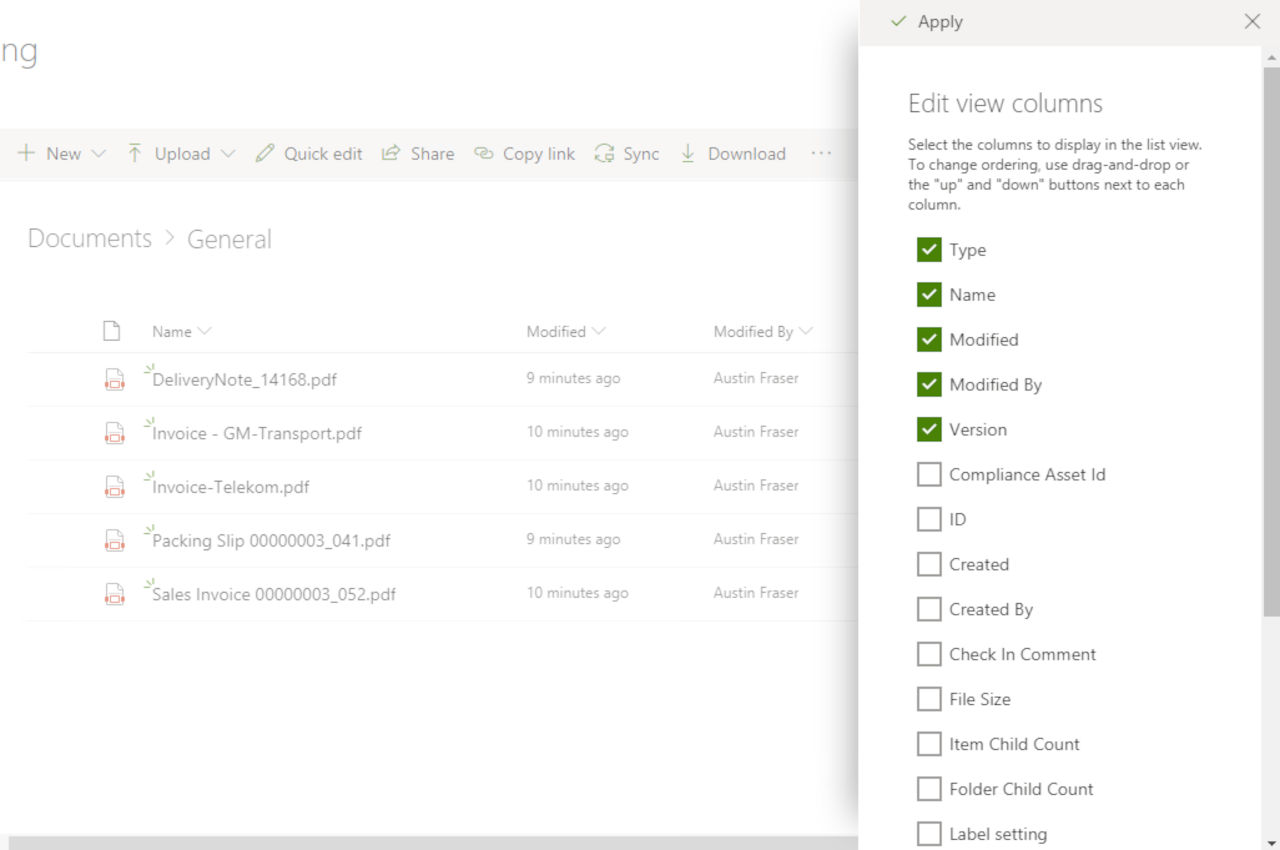
Accordingly, we see the following view as a result:
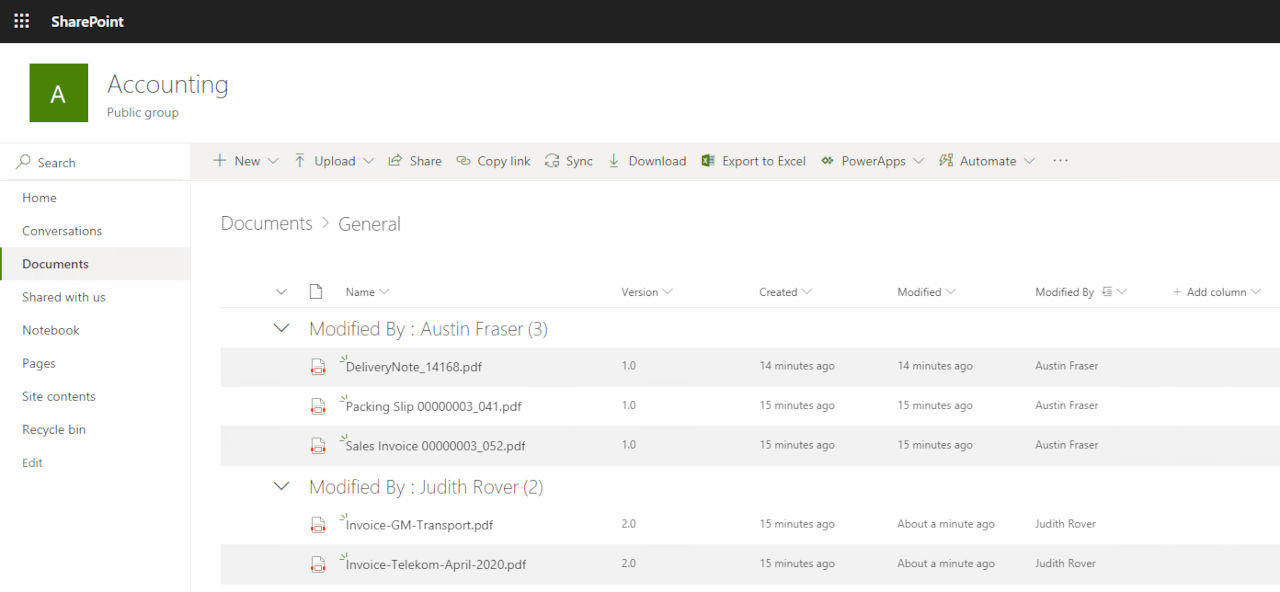
This view is now also available in Microsoft Teams:
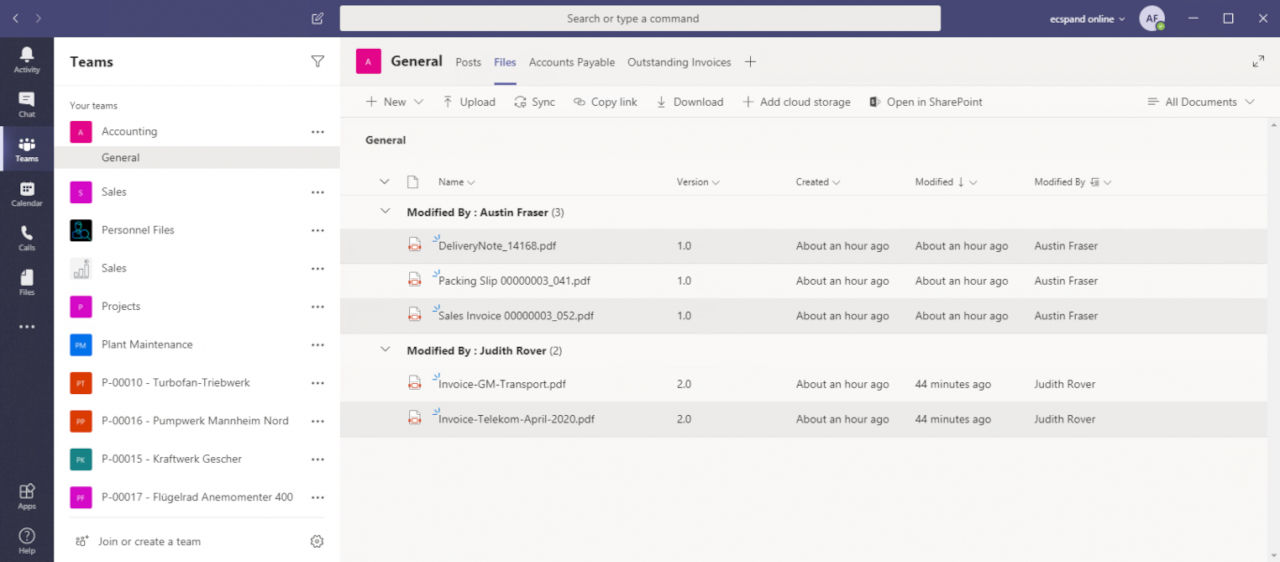
Whenever a new team is created, a new SharePoint website is also created in the background.
But if there is significant overlap and document management in Teams is (technically) analogous to document management in SharePoint, what do you actually have to bear in mind? What are the advantages and disadvantages of managing documents via Teams in SharePoint?
Document management via Teams in SharePoint
Advantages
- Fast and straightforward communication and collaboration
- Quick sharing, provision, and simultaneous editing of documents within project or department teams
- Direct communication in context with documents, for example via chat or video calls
- Automatic notifications about changes to relevant documents for the people involved
Disadvantages
- Documents are often no longer stored in a structured way
- The integration of Power Automate workflows is not clearly defined for IT or key users. It remains unclear which Microsoft Teams channels these should be linked to and which teams will be added in the future.
For these reasons, it can be both sensible and beneficial to store final documents on the regular SharePoint site of a department, making them accessible to a broader audience there.
The question of whether one or the other is “better” therefore cannot be answered in general terms. The answer depends on the specific use case and the existing conditions within an organisation.
One weakness in both worlds: Linked depiction of documents and information
The preceding discussion of the “Teams vs. SharePoint” issue gave you an impression of how and where you can best edit and store individual documents under specific conditions and how you should do so.
However, many companies require the existence of shared documents and information in Teams or SharePoint that need to be depicted in a coherent and structured manner. A combination is also imaginable:
Documents are created and edited on an ad hoc basis in a project. Additionally, it must be possible to store both commercial documents and project-related e-mails very easily in the digital procedure.
An example at this point can illustrate that this requirement can also be realised with the help of simple tools in Teams and SharePoint. The following graphic shows a Microsoft Teams project room. In this room, documents can be edited under “Files”, as we have already learned. Furthermore, the documents can be very easily transferred to a file structure once they have obtained a certain status.
A file structure that is integrated into the project room could resemble the example below:
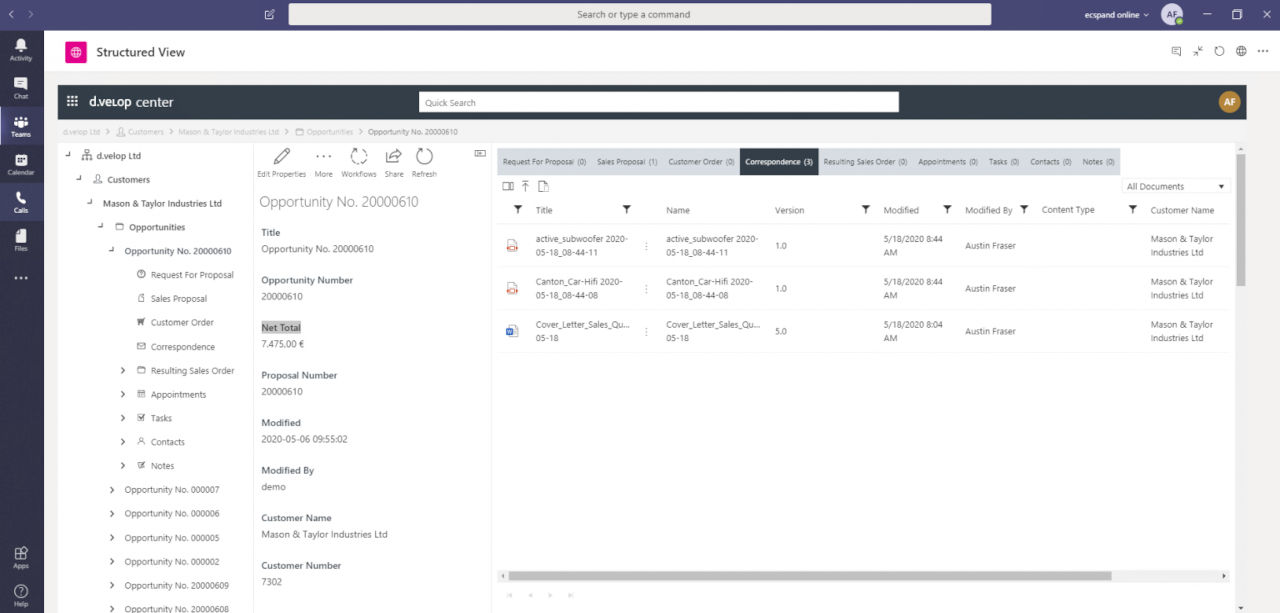
While the file structure we just discussed is displayed in the left area of the view, the registers are depicted in the middle, much like a folder that you remove from a cabinet and open up. The relevant documents used are stored behind that, which is to say, in the right area. The top file thus unites the various document types that can come from systems besides Teams, such as ERP or Outlook.
The highlight is that this file structure can now simply be opened, even from Outlook or ERP.
Additionally, e-mails can easily be added to a project file using drag-and-drop.
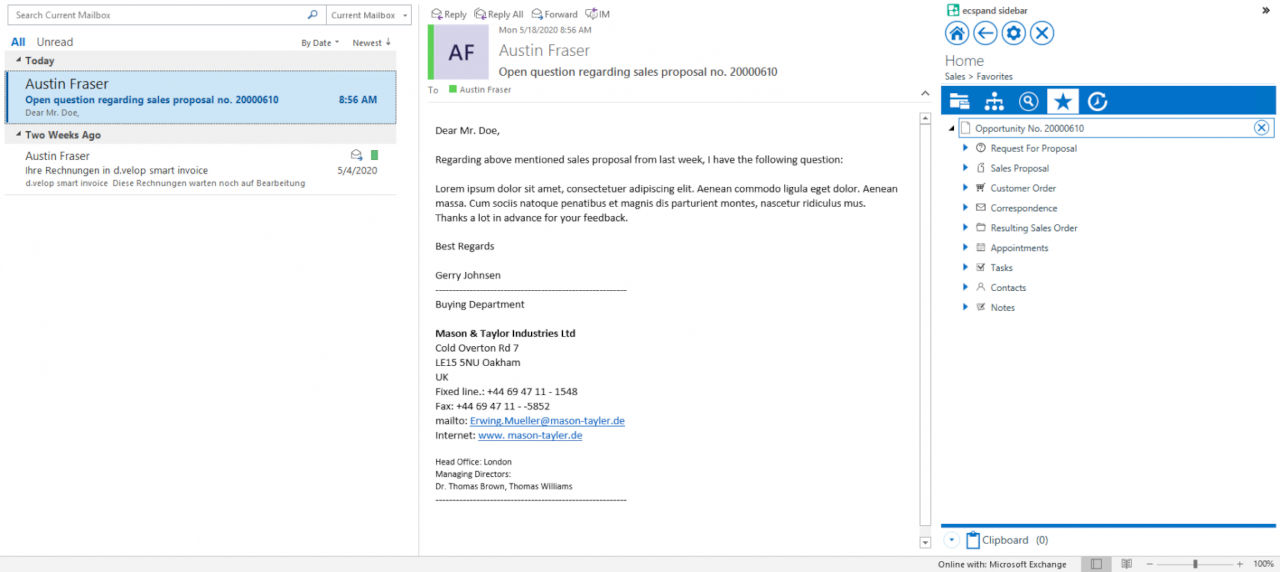
Opening the same process from ERP (here SAP R/3):
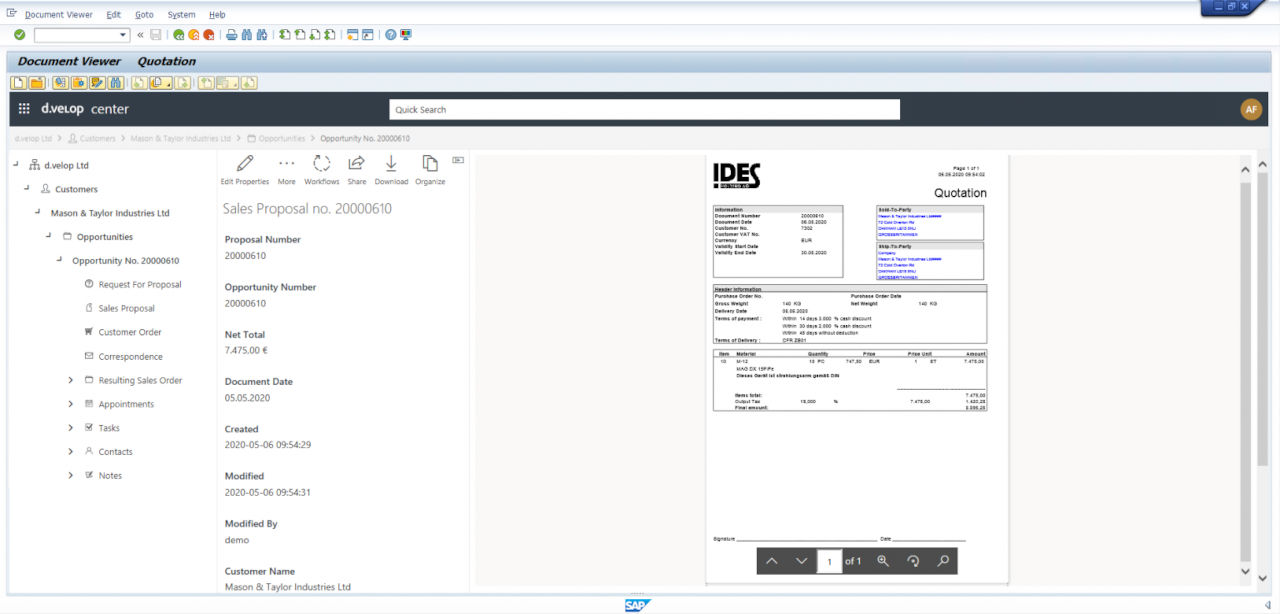
Just as it is possible to open this procedure from within Teams, Outlook, or SAP, it could now also be called up directly in SharePoint, from the CRM, from Word, or from within another system.
In the end, the approach depicted here orchestrates the libraries that exist in Teams and SharePoint and portrays them as a cohesive structure.
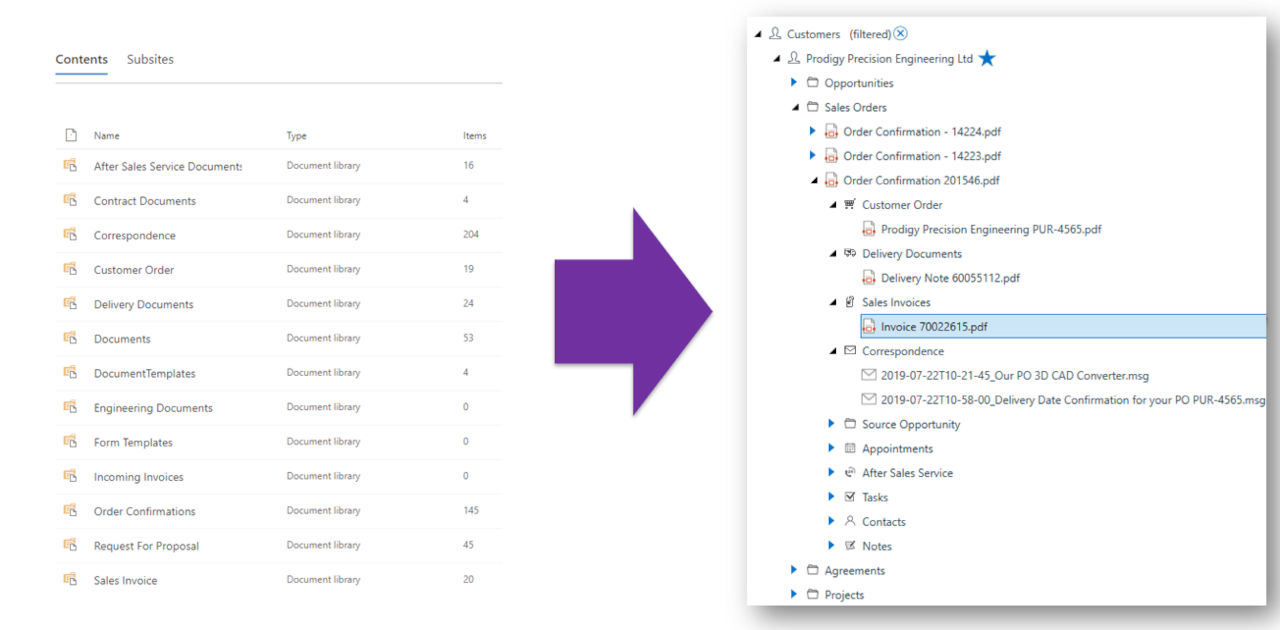
What is the big advantage? This orchestration is more strongly oriented towards the needs of end users and makes both SharePoint and Teams more practical.
